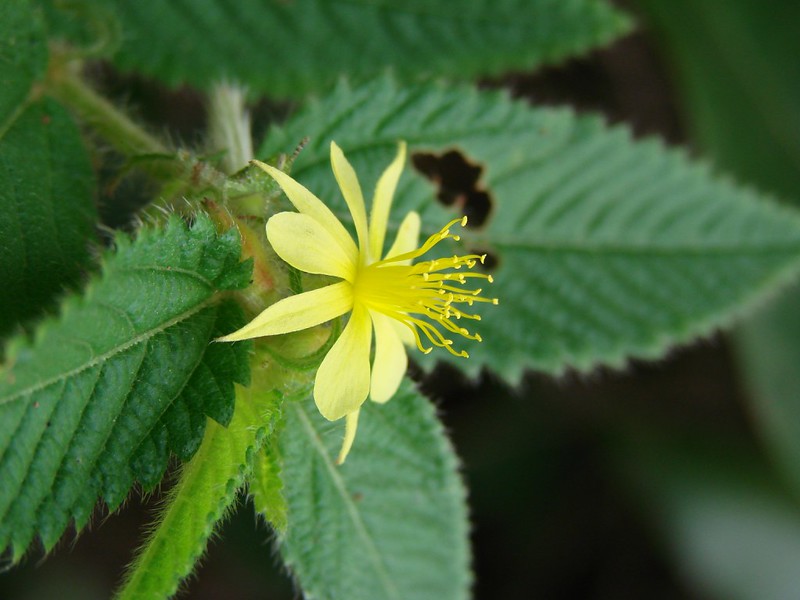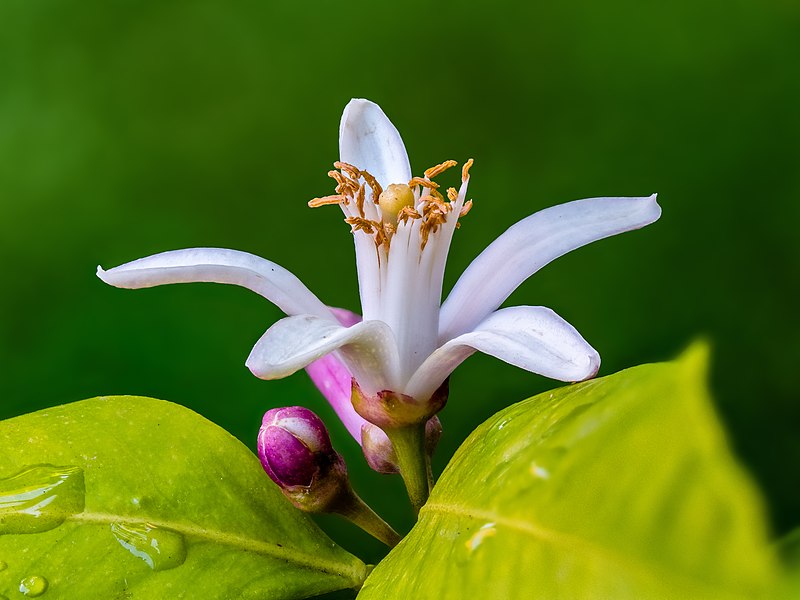What is the Difference Between Polyandrous and Polyadelphous Androecium
Table of Contents
The key difference between polyandrous and polyadelphous androecium is that in polyandrous androecium, filaments of the stamens are free, while in polyadelphous androecium, the filaments of the stamens are united in several groups.
Stamen is the pollen-producing reproductive organ of a flower. Stamen generally consists of a stalk called the filament and an anther attached to the filament. The anther contains the microsporangia. Collectively, the stamens in a flower are called the androecium. The androecium may consist of a few or many stamens. In various species of plants, the androecium forms a great variety of patterns. Some of these patterns are highly complex. Polyandrous and polyadelphous androecium are two types of androecia present in plants.
CONTENTS
1. Overview and Key Difference
2. What is Polyandrous Androecium
3. What is Polyadelphous Androecium
4. Similarities – Polyandrous and Polyadelphous Androecium
5. Polyandrous vs Polyadelphous Androecium in Tabular Form
6. Summary – Polyandrous vs Polyadelphous Androecium
What is Polyandrous Androecium?
Polyandrous androecium is a type of androecium where the filaments of the stamens are free. A well-known example of polyandrous androecium is Corchorus. Corchorus is a genus with around 40-100 species of flowering plants in the family of Malvaceae. It is native to tropical and subtropical regions throughout the world. The genus Oceanopapaver previously of uncertain placement, has recently been synonymized under the new genus Corchorus.

Figure 01: Polyandrous Androecium
The name Oceanopapaver was first suggested by French botanist Guillaumin in 1932. However, the genus Corchorus was first described by Linnaeus in his great work Species Plantarum in 1753. The plants of this genus are tall and normally annual herbs. They reach a height of 2-4m with only a few sides branched or unbranched. The leaves are alternate, simple, lanceolate, and 5 to 15cm long. Moreover, the leaves have an acuminate tip and a finely serrated or lobed margin. The flowers are small in size (2-3 cm diameter). They are yellow in colour with five petals. Furthermore, fruit is a many-seeded capsule.
What is Polyadelphous Androecium?
Polyadelphous androecium is a type of androecium in which filaments of the stamens are united in several groups. Though the filaments are united in many groups, the anthers remain free in polyadelphous androecium. The androecium of Ricinus is a good example of polyadelphous androecium. It is a monotypic genus. Ricinus communis is the sole species. Ricinus communis is also called castor bean or castor oil plant. It is a species of perennial flowering plant in the spurge family Euphorbiaceae. Though this species is indigenous to South-Eastern Mediterranean Basin, Eastern Africa, it is widespread throughout the tropical region. Usually, this species is grown as an ornamental plant.

Figure 02: Polyadelphous Androecium
The genus Citrus is another good example of having polyadelphous androecium. Citrus is a genus having flowering trees and shrubs in the rue family, Rutaceae. This genus includes crops such as orange, lemons, grapefruit, pomelos and limes. Moreover, this genus is native to South Asia, East Asia, Southeast Asia, Melanesia, and Australia.
What are the Similarities Between Polyandrous and Polyadelphous Androecium?
- Polyandrous and polyadelphous androecium are two types of androecia present in flowering plants.
- They are two types of male reproductive structures of flowers.
- Anthers are free in both androecia.
- The plants that have polyandrous and polyadelphous androecium grow both in tropical and subtropical regions.
What is the Difference Between Polyandrous and Polyadelphous Androecium?
In polyandrous androecium, filaments of the stamens are free, while in polyadelphous androecium, the filaments of the stamens are united in several groups. So, this is the key difference between polyandrous and polyadelphous androecium. Furthermore, the flowers of genus Corchorus have polyandrous androecium, while the flowers of genera Ricinus and Citrus have polyadelphous androecium.
The below infographic lists the differences between polyandrous and polyadelphous androecium in tabular form for side by side comparison.
Summary – Polyandrous vs Polyadelphous Androecium
Stamen is the pollen-producing reproductive organ of a flower. Stamens in flowers are collectively called the androecium. Polyandrous and polyadelphous androecium are two types of androecia present in plants. Filaments of the stamens are free in a polyandrous androecium, while filaments of the stamens are united into several groups in polyadelphous androecium. Thus, this is the key difference between polyandrous and polyadelphous androecium.
Reference:
1. “Components of Androecium in Plants (with Diagram).” Biology Discussion, 27 May 2016.
. “Distinguish between the Following Pairs: (A) Flower and Inflorescence, (b) Petals And Petaloid – BIOLOGY Q&A.” BYJUS, 29 Dec. 2020.
Image Courtesy:
1. “Corchorus hirtus” By João Medeiros (CC BY 2.0) via Flickr
2. “Citrus flower 2019-06-13 09-54-06 (C)-PSD” By Reinhold Möller (CC BY-SA 4.0) via Commons Wikimedia
ncG1vNJzZmivp6x7pbXFn5yrnZ6YsqOx07CcnqZemLyue9ahmK1lmah6tbTEZpuinpaav6a6wp5km52krLKmuoyppqWxkaOxs7vUrGSappRivbC42JqbnqSgnby2v4yapZ2qn5qwqsHMaA%3D%3D